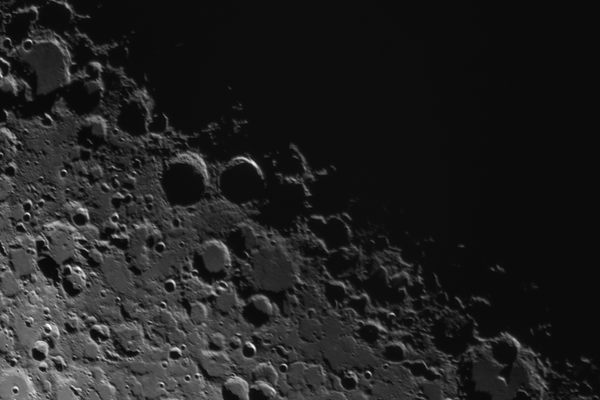Scotland’s Ancient Stone Circles Mark Our Deep Connection to the Moon
Unlike Sun-focused Stonehenge and other megalithic monuments, Tomnaverie and similar stone circles hint at the Moon’s importance to ancient people.

Humans have not yet invented time travel, but there are a few ways to experience a version of it nonetheless. The best way I have yet found is to walk among Earth’s rocks.
Wherever you may find a rock, you can be certain that what looks like an insignificant bit of detritus tells a story too enormous to contemplate: the stirring of Earth’s mantle; the eruption of volcanoes; the violent shudder of earthquakes; the birth of mountains; the incessant movement of rivers, oceans, and glaciers.
Now imagine rocks that humans have taken and relocated. The shape of the rocks says something about their origins, but it also says something about us: Soft, pancake-shaped river rocks are rounded by rushing waters over millennia, then captured and placed on front lawns because they are pretty and smoothed safe for barefoot kids. Giant boulders, moved and worn smooth by glaciers, become our boundary stones, or our altars.
Megaliths (literally, “large rocks”) are found around Earth, and monuments humans have made from them span continents and cultures and thousands of years. Most megalithic monuments are associated with the movements of the Sun. The most famous of these is Stonehenge, with its alignment to the solstice, when the Sun appears to reverse the angle of its path across the sky, from north to south or vice versa. People across civilizations have used the solstice to mark time, often starting a new calendar year. Many of them left behind stone circles similar to Stonehenge. These arrangements of giant boulders are so ancient and yet feel so familiar that they seem like portals, enabling access to somewhere that is both distant and connected to us. I think this is as their makers intended.
But one collection of stone circles stands apart. In northeastern Scotland, stone circles are related not to the Sun, but to the Moon. And they all possess a unique, defining trait: They contain a recumbent stone, a large stone on its side, flanked by two upright stones. The recumbent rocks are usually found on the south or southwest arc of the circle—where the summer Moon is prominent in the sky.

Some of the boulders in these stone circles contain red jasper, connoting blood. Some of them are flecked with quartzite, suggesting the Moon, and quite literally reflecting its light. The most otherworldly of these stone circles, to my mind, is called Tomnaverie, located about 30 miles west of Aberdeen.
The spring day I visited Tomnaverie Stone Circle, while researching my new book, was sunny but blustery. The only sound was the wind, which took my breath away. Setting foot in the center of the circle, surrounded by unspeakably ancient boulders, was deeply unsettling. I felt uneasy, like I didn’t quite belong there; it was not unlike standing before an altar, or at a cemetery. I was surprised to be brought close to tears.
Looking out over the recumbent, I had a clear view of the Cairngorm Mountains to the west, and the soft agricultural fields, carved into submission by both glacier and plow. The monument’s stones are arranged symmetrically, in decreasing heights, to draw your eye to the southwest quadrant. Scholars think the arrangement is so unrelated to solar patterns that the circle can only be related to the Moon.
Construction on Tomnaverie Stone Circle probably began around 2500 B.C.—4,500 years ago, around the golden age of the Sumerian civilization and the height of the Old Kingdom in Egypt. The recumbent was added later, but still in the deep past, millennia ago. Archaeologists have excavated the hill where the stone circle is found, and the areas surrounding it, locating several concentrations of stone tools of various regional styles. Scholars think the stone circle was used as a regional gathering point, or as a spot to burn bright signal fires. Or, quite possibly, it was meant to connect people to realms beyond their own meager existence. It was hard not to see it this way myself.
Tomnaverie Stone Circle is only 500 years younger than the oldest stones of Stonehenge. It is evidence that megalithic monuments to the Moon, and the study of its movements, are at least as old as—and in some cases, even older than—our ancestors’ monuments to the Sun.
Though it was midmorning when I visited, I tried to imagine what it would be like at night. Tomnaverie, like other recumbent stone circles in the region, was probably intended to be used in the moonlight, a softer, more spectral form of reflected sunlight. The light would have glinted off the rocks, and when it was full, cast long shadows. Firelight, too, would have danced on the stones, mixing with the milky moonlight.
We don’t have any written records of how stone circles like Tomnaverie were used, so some of it must be left to the imagination. But we do know they were aligned to the Moon, and its motions through the sky. That means they represent some of our oldest and most profound connections to the Moon and its path through our lives, and through our years.
If it has been a while since you communed with rocks, I urge you to revisit them, and your assumptions of what rocks represent. Look down at them; a pebble in your palm is evidence of a planet remolded by time, wind, and water. Walk on them; the boulders lining your favorite walking path, or the black bedrock jutting out from Central Park, or the gravel lining your driveway, are physical bits of Earth’s past. Touching them and considering them gives you access to that time. And I hope you think about the Moon, too. Its solid iron core pulls on you, physically and spiritually, just as it tugs on everything else that has ever lived on Earth. It is as much a part of you as the iron in the blood pumping through your own heart. This is a connection you can make even if you can’t travel to Tomnaverie Stone Circle. All you have to do is look up.
Wondersky columnist Rebecca Boyle is the author of Our Moon: How Earth’s Celestial Companion Transformed the Planet, Guided Evolution, and Made Us Who We Are (January 2024, Random House).














Follow us on Twitter to get the latest on the world's hidden wonders.
Like us on Facebook to get the latest on the world's hidden wonders.
Follow us on Twitter Like us on Facebook